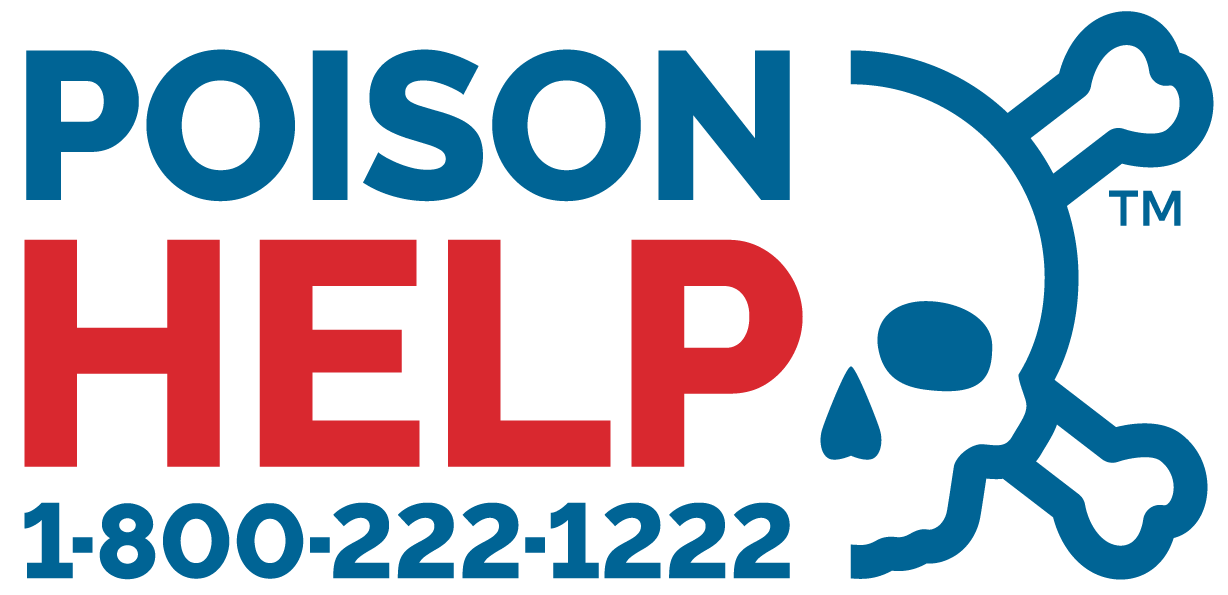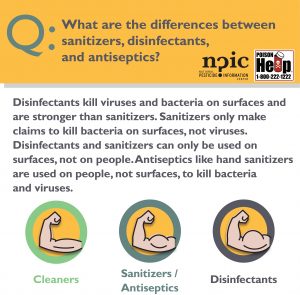Kids and Chemicals
Preventing chemical exposures among children
With the increased use of cleaning products, poisoning remains a real risk. The following information is recommended for caregivers and/or anyone who works with children. It starts with an overview of common substances and terms and then covers prevention tips for people of all ages.
Reminder: If you or anyone else is exposed to any poisonous product or substance, get immediate help by calling 1-800-222-1222. Fast and free expert advice is available 24/7 and can help prevent unnecessary ER visits.
What is the difference between cleaning, disinfecting, and sanitizing surfaces?
Cleaning removes germs, dirt, and/or debris from surfaces or objects. Cleaning works by using soap and water to physically remove germs from surfaces. This includes scrubbing, washing, and rinsing. This process does not necessarily kill germs but can remove them, therefore lowering their numbers and reducing the risk of spreading infection.
Disinfecting kills germs on surfaces or objects. Disinfecting works by using chemicals to kill germs on surfaces or objects. This process does not necessarily clean dirty surfaces or remove germs, but by killing germs on a surface after cleaning, it can further lower the risk of spreading infection.
Sanitizing lowers the number of germs on surfaces or objects to a safe level (as judged by public health standards or requirements). This process works by either cleaning or disinfecting surfaces to lower the risk of spreading infection.
Prevention tips for disinfectants and other cleaning products:
- Read and follow ALL directions and safety warnings on the label before using any products. Teach older children and teens about why this is absolutely necessary to ensure safety since using disinfectants in any way other than as they are intended can result in serious harm.
- Do not use disinfectants on people, only use on surfaces listed on the label. They are not designed to be effective on skin and can increase health risks if used that way.
- Always dilute concentrated products (such as bleach) as directed; using them at a higher concentration than recommended can be dangerous.
- Open windows and doors to ensure adequate ventilation while using any cleaning products or substances.
- Don’t accidentally conduct a chemistry experiment in your home! Mixing cleaning products may create a dangerous gas that can cause coughing, breathing problems, or burns to the skin, eyes, nose, throat, and lungs.
- Store all products up high and out of the reach of young children and when cleaning, never leave a product unattended.
- Do not transfer chemicals to water bottles or other beverage containers since this can cause someone to mistakenly swallow them.
- Ask young children to help with straightening up rather than disinfecting! By having them organize toys or fold clothes instead of using any disinfectants or cleaning products, the risk of poisoning can be reduced.
Hand sanitizer safety:
- Hand sanitizers are good to use when soap and water are not available but check the ingredients first! Look for hand sanitizer with greater than 60% ethanol (also known as ethyl alcohol) or 70% isopropanol (also known as isopropyl alcohol).
- While a small lick or taste of hand sanitizer is usually not concerning, swallowing larger amounts can cause children to have low blood sugar or slow down their heart rate and breathing.
- Always supervise young children when they use hand sanitizer and keep it out of their sight/reach between uses. If you live or work with a particularly adventurous child, consider using hand sanitizing wipes instead of liquid/gel to limit potential exposures to larger amounts of sanitizer.
Sources
CDC – Hand Sanitizer Use Out and About. https://www.cdc.gov/handwashing/hand-sanitizer-use.html. November 13, 2020.
CDC – How To Clean and Disinfect Schools To Help Slow the Spread of Flu. https://www.cdc.gov/flu/school/cleaning.htm. November 10, 2020.
NPIC – Disinfectant safety during the COVID-19 pandemic. http://npic.orst.edu/faq/covid19.html. November 10, 2020.



